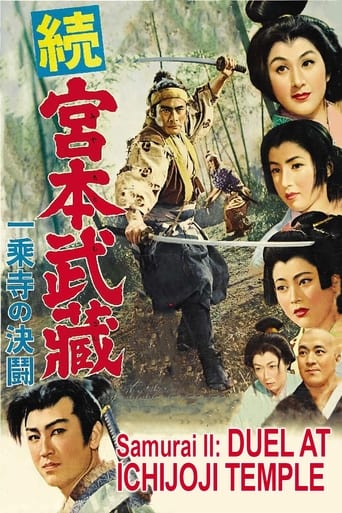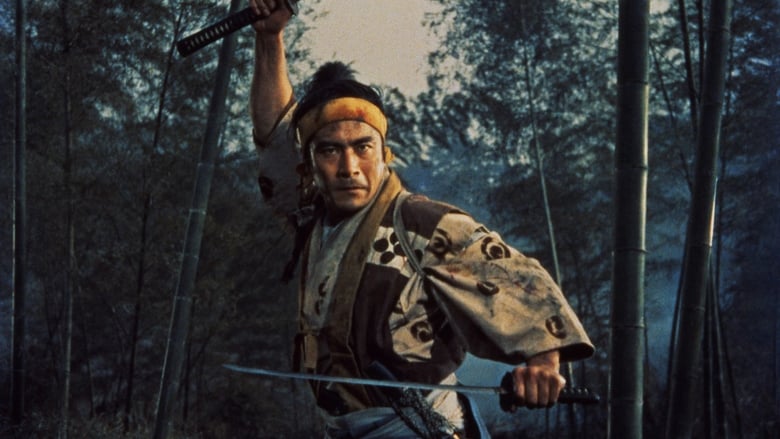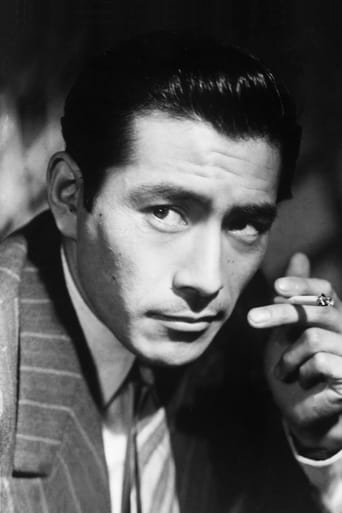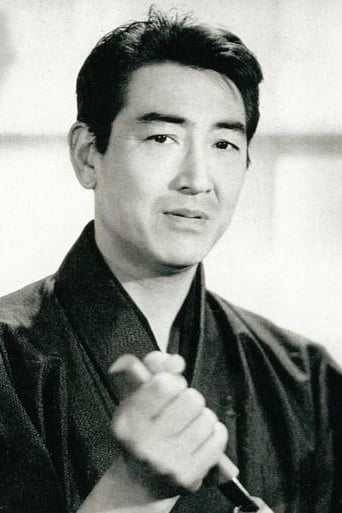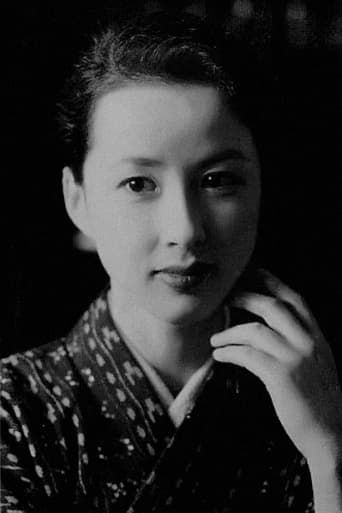Samurai II: Duel at Ichijoji Temple (1955)
After years on the road establishing his reputation as Japan's greatest fencer, Takezo returns to Kyoto. Otsu waits for him, yet he has come not for her but to challenge the leader of the region's finest school of fencing. To prove his valor and skill, he walks deliberately into ambushes set up by the school's followers. While Otsu waits, Akemi also seeks him, expressing her desires directly. Meanwhile, Takezo is observed by Sasaki Kojiro, a brilliant young fighter, confident he can dethrone Takezo. After leaving Kyoto in triumph, Takezo declares his love for Otsu, but in a way that dishonors her and shames him. Once again, he leaves alone.
Watch Trailer
Cast


Reviews
Thanks for the memories!
While it is a pity that the story wasn't told with more visual finesse, this is trivial compared to our real-world problems. It takes a good movie to put that into perspective.
True to its essence, the characters remain on the same line and manage to entertain the viewer, each highlighting their own distinctive qualities or touches.
This is one of the best movies I’ve seen in a very long time. You have to go and see this on the big screen.
The second installment opens up with a duel. Musashi arrives at a sight early at dawn and encounters a stubborn young child. The opening samurai duel sets the stage for artistic, well choreographed fights with a high level of suspense. Musashi is immediately put down by a wandering Zen monk who says that he is still too wild to be considered a true samurai; thus begins the balancing act and spiritual transformation of Musashi.In this film we see the tragedy of Matahachi in his relationship fleshed out. In addition, the love triangle between Akemi, Otsu and Musashi continues. Musashi wants to make a name for himself and ends up seeking out the master of the Yoshioka clan for a duel. The students of the master continue to try to ambush and kill off Musashi. We meet a new character that will be more fully developed in the third movie: Kojiro Sasaki. Kojiro is a ronin as well seeking out to become the best samurai of the land. He is interested in Musashi's growth as a legend so that he can face him off later and gain an even greater reputation.The film is shot at 1:33:1 aspect ratio which creates shots with greater depth within the composition. The position and use of the camera is done masterfully. One of the most memorable scenes is when Musashi leads his gang of attackers into the muddy rice fields. It creates great tension and memorable fights. Inagaki is also very skillful in setting up great scenes, like a duel with snow falling and then cutting to another simple scene that takes place after the fight. He teases the audience and leaves it wanting for more.One of the most surprising aspects of the film is how forward the female characters are portrayed. They are not simple, obedient women, but have strong personalities and own their sexuality. Toshiro Mifune plays the character flawlessly and displays his commanding presence as a skilled swordsman that is later perfected within the great Kurosawa films.
This comment about the "Samurai Trilogy" starts on the page for Miyamoto Musashi (Samurai I). My first viewing of the second episode was memorable because I got to take the train into town all by myself, and view it in a Tokyo theater. The first episode had just been shown on base, in a sort of cultural exchange, and my parents saw it and were pleasantly non-outraged-- I was a 9-year-old samurai-movie addict, and they believed enthusiasm beyond a certain intensity should be curbed. It was the same conflict as comic books some few years earlier. Technicolor was a big deal back then, especially in Japan, and it became the issue on which my viewing of "swordfighting movies" was decided-- the ones in color were historical films worth viewing, and even had something to teach. The black-and-white ones shown in Irumagawa and surrounding villages-- I had to sneak off to see. Ichijoji no Ketto (Duel at Ichijoji Temple) shows Miyamoto-san's achievements, while barring no holds on the issue of what they cost him. The romantic subplot continues, though its development in the western sense (toward union, wedded bliss) is thwarted at every turn. The issue is always a conflict between love and duty, and each deferment of gratification spells out a new step in the redefinition of the national character that is being mapped here. Again, some of the importance of all this is lost, even to modern Japanese audiences for whom the issues are long settled-- at the time, though, they were cliffhangers. A new character is introduced, Kojiro Sasaki who will emerge in part 3 as a rival for Musashi-- his equal except for certain features in their respective character. By the way, the score is excellent and haunting-- it extends like a symphony through all three parts, and has a leitmotif "hook" that will cause your ears to pick up in recognition, perhaps years from now, when you hear it again.
OK. First of all, I am huge Toshiro Mifune fan. I am also a huge...and I mean huge Musashi fan. And lastly I have seen plenty of Samurai films. But I have watched Samurai 2: Ichijôji no kettô twice now, and I just can't stomach it. It is perhaps one of the most clichéd samurai films I have ever seen. The story seems to be based on the mystical Miyamoto Musashi, rather than a more realistic character. In addition, there is so much thick, syrupy melodrama and love triangles that it really hinders the story from flowing well. Not to mention it often takes away energy from some of the action scenes.Mifune really makes this film bearable. Koji Tsuruta as Kojiro Sasaki is also outstanding and commands plenty of respect on screen. However, some of the other actors are mediocre at best.There is much to be said about old Samurai cinema, and the way they glorified and really elevated these noblest of warriors. But Ichijôji no kettô just covers it in a thick melodramatic goo and wraps it in toilet paper.In addition, the film has very bad lighting, plenty of anachronisms, continuity problems and poor editing. Once again, Toshiro Mifune as Miyamoto Musashi is my personal hero, Jesus Christ, Lord and Savior...but was there ever! a less fitting movie for this cinematic giant.RE-MAKE!
My view of this early Musashi trilogy is strongly coloured by the far-superior 1960's series of five. The first in this 1950's trilogy was a shattering disappointment. With Japan's greatest actor playing one of Japan's greatest folk heroes, how could you miss ? Well, the first one was flat. The pace was slow, and Mifune's exploding energy was kept well under control. Shame ! This second instalment corrected many of the problems of the first. The action is staged much better (with one caveat : see below), Mifune gets to be ferocious, as well as express a range of other emotions, including something close to love. The story is a bit disorienting, as it shows events in a different order to the 1960s series, but it still works well. The women throw themselves at our hero at a much faster rate, which gets things moving along nicely.Nevertheless, I have marked down this movie significantly for the incredible stupidity of setting most of the action scenes in the dark. Director, what were you thinking ?! Instead of having the duels at six in the morning, move them to seven or use a moonlit night. Hell, what a waste.

